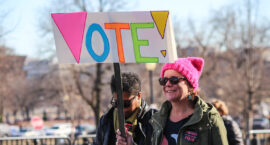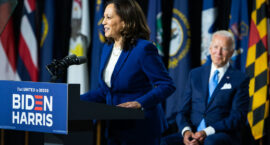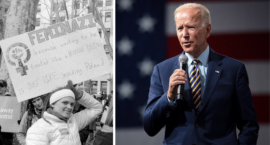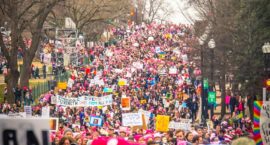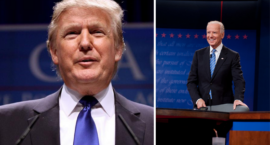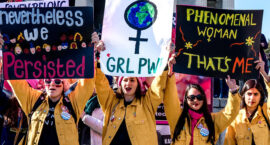Women were no doubt key to the victory of President Joe Biden and the election of first woman vice president, but the story of the gender gap in 2020, and in every context in American politics, is complicated.
Tag: Gender Gap
The Ms. Must-Read: “If They Don’t Give Us a Seat, We Bring a Folding Chair”
Every Friday, Ms. executive editor Kathy Spillar breaks down the week’s biggest stories, offering commentary. This weekly letter from the editor recaps critical developments in U.S. and global feminism—alongside the latest Ms. must-reads—right as they unfold.
The Ms. Must-Read: “What Kind of America Will This Be?”
Every week, Ms. executive editor Kathy Spillar breaks down the week’s biggest stories, offering commentary. This weekly letter from the editor recaps critical developments in U.S. and global feminism—alongside the latest Ms. must-reads—right as they unfold.
In the Battleground States, Trump’s Got a Problem: Women
The gender gap measures the difference in men and women’s votes for the leading candidate.
Women make up the base of the Democratic party, and the gender gap plays a critical role in Biden’s support—especially in the battleground states.
Before and after the political conventions and into the fall, the gender gap remains stronger than ever.
The Gender Gap Plays a Critical Role as the Real Election Starts
In the presidential horse race, Vice President Biden is currently the frontrunner—owing his lead to women.
We Have Her Back: The Objectification of Women in Politics—and Why it Matters
Women are subject to objectification, and in particular, sexual objectification, at significantly higher rates than men.
Objectification is just one strategy used to devalue and undermine women in politics. However, psychology research teaches us that these tactics can be particularly insidious not only for women candidates, but for women in the electorate too.
Feminist Voters Could Decide the November Elections
This year, underlying the largest gender gaps in history, is the growing proportion of women who identify as feminists—a situation the suffragists hoped would happen after women fought and won the vote.
If voting rates and turnout among women go beyond the last presidential election and are the highest ever reported—in 2008 as 65.5 percent—then the gender gap and feminist factor’s impact on the outcome of the 2020 elections will likely be even larger than in 2018 or past presidential elections.
The Difference Women Voters Make
Women vote at higher rates than men, and there is a growing gender gap in partisan affiliation and presidential voting, fueled largely by Black and Latina women’s strong identification with the Democratic Party.
Yet despite the fact that women are over 53 percent of voters, they are just 23.7 percent of Congress, 29.2 percent of state legislators, and 28.9 percent of statewide executive officeholders.
We have a long way to go to achieving women’s equality.
Women’s Representation at the Ballot Box—and in the Halls of Power—Has a Long Way To Go
While the numbers show women participate voraciously in civic life and outnumber men at the polls, our representation in the halls of power continues to lag.
An undeniable force in the electoral system, why don’t women’s votes translate to equal representation in political presence and policy prioritization?
Keeping Score: Domestic Violence, Changemakers and the 2020 Election
In every issue of Ms., we track research on our progress in the fight for equality, catalogue can’t-miss quotes from feminist voices and keep tabs on the feminist movement’s many milestones. We’re Keeping Score online, too—in in this biweekly round-up.



